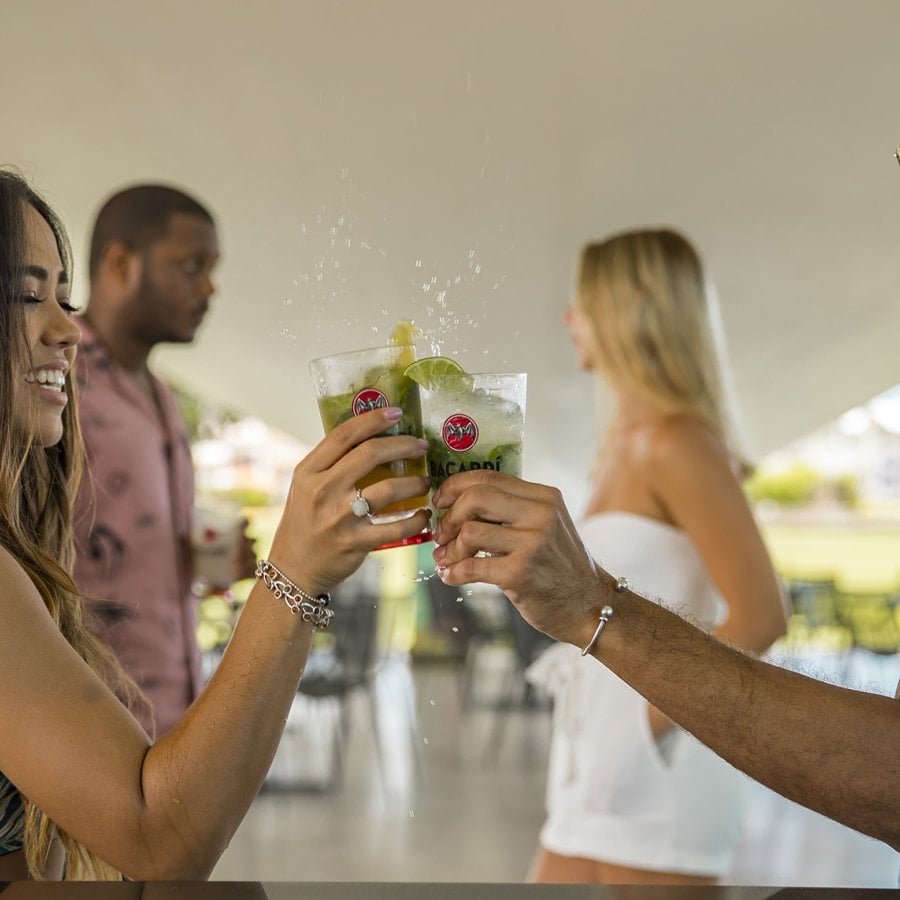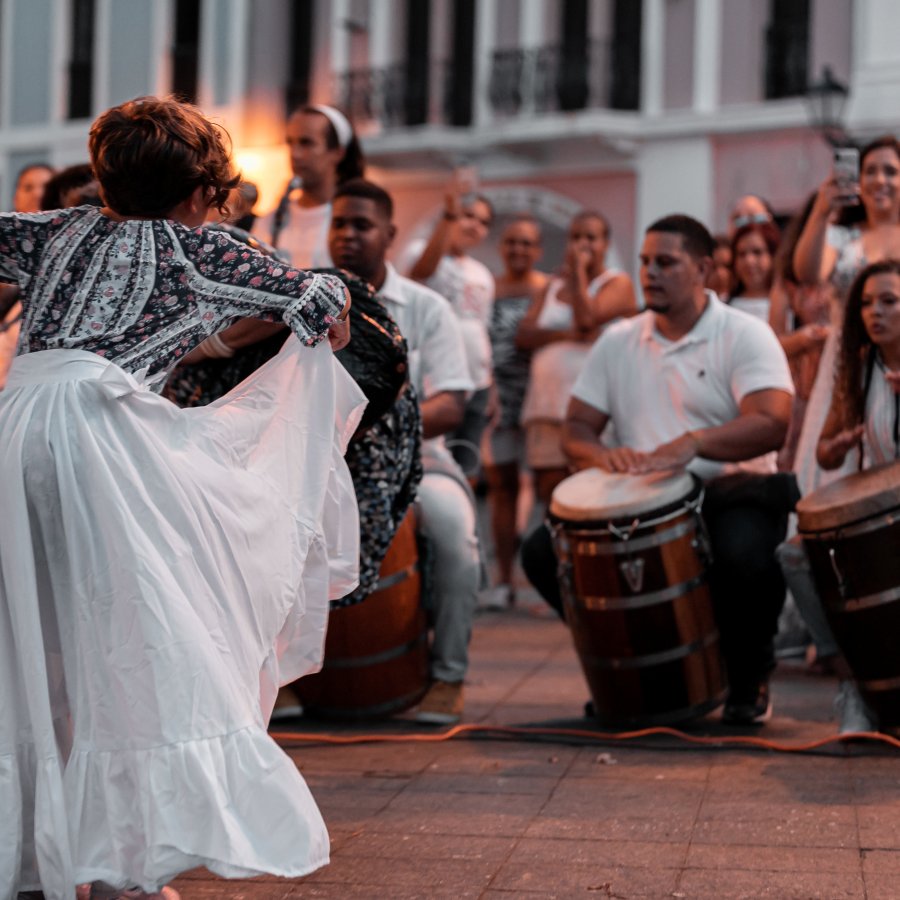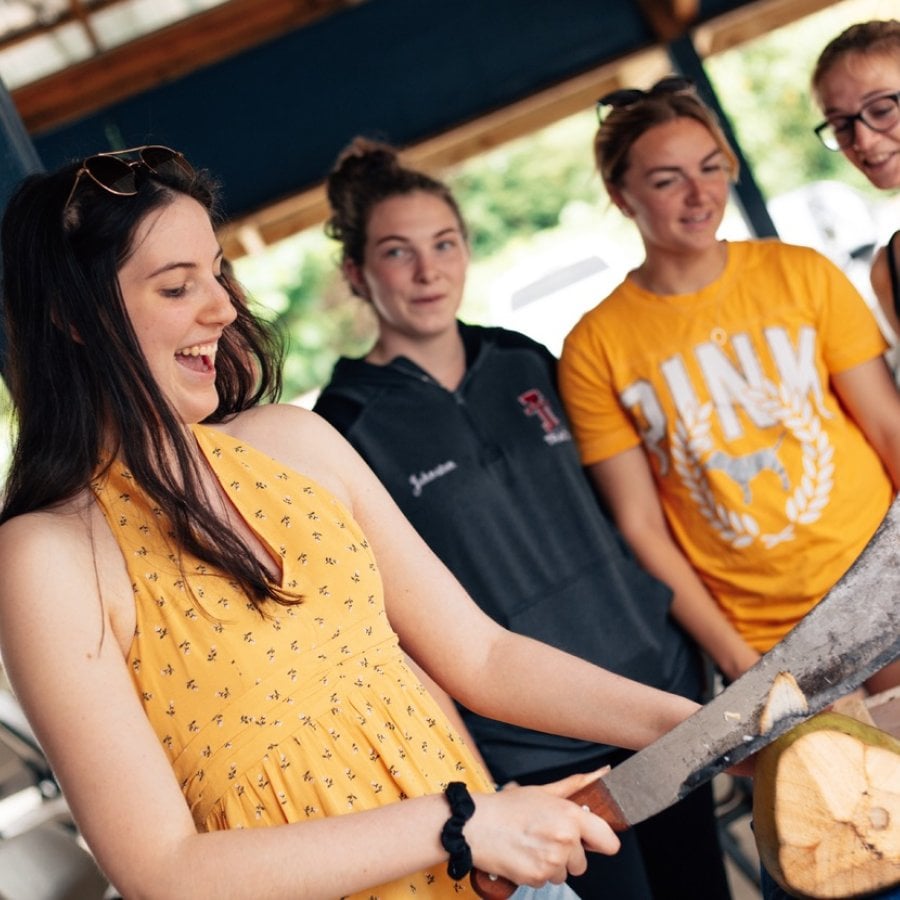In Puerto Rico, music isn’t complete without dancing.
If you love to dance, you'll love Puerto Rico! Any day of the week, you'll find a bar or a club full of people moving to the beat—whether it's a live band, a DJ spinning, or a jukebox blasting. Salsa, merengue, reggaetón, and bachata are styles of music and dancing most people may recognize. Locally, Boricuas also dance plena and bomba.
If you want to learn some moves, consider taking a dance class during your visit to the Island. If you're good at picking up dance styles, then head straight to any fiesta and join in with the locals to learn how it’s done. Either way, you're going to have a great time!
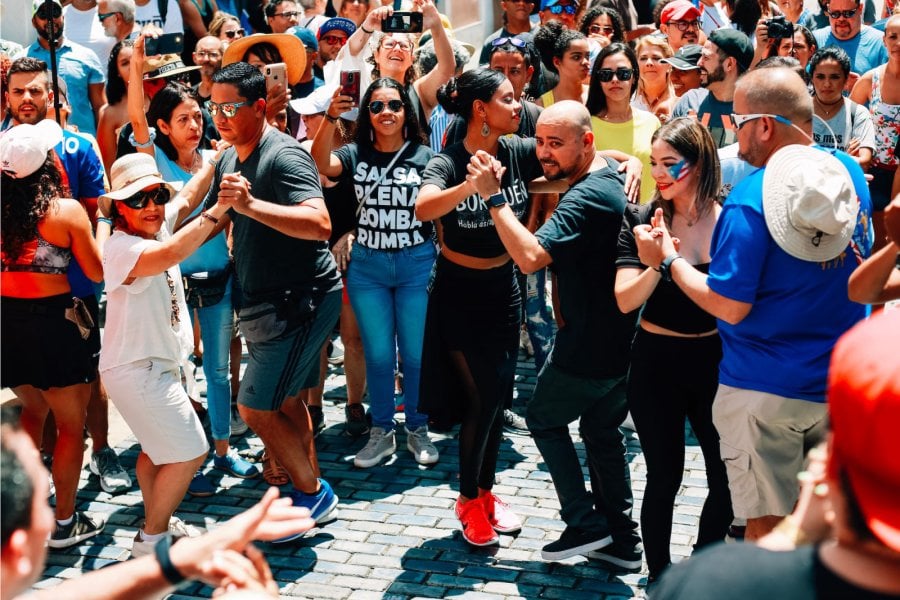
You can find people dancing salsa on every corner of the Island.
Salsa
Salsa is the style of dancing most people associate with Puerto Rico and there is no shortage of places offering salsa nights—and some even have free classes. For those just coming to the Island for a short visit, there are a number of places where you can learn to dance in one night.
Where to Learn Salsa in Puerto Rico
Many spots around San Juan have dedicated salsa nights that will have you dancing the night away. Eco’s Sports Park has a legendary salsa night every Tuesday! Or, if you’re looking to dance the basic steps or try a few turns, visit popular salsa spots like Piso Viejo, Pomarrosa, La Factoría, and Taberna Los Vázquez, all in San Juan, where locals gather to enjoy the rhythm and show off their moves.
Also, there are independent tour guides you can find through Viator or Airbnb Experiences that also offer inexpensive one-day salsa classes. Tour company Get Shopped even offers a Rum, Mixology, and Salsa tour, which ends with a salsa lesson after a few drinks around Old San Juan.
If you want to see some serious salsa performances, plan your trip during the Puerto Rico Salsa Congress, which gathers some of the most impressive salsa dancers from around the world. Or, if you want to spend a whole day dancing, come for El Día Nacional de la Zalsa (National Zalsa Day; the Z is in reference to radio station Z-93, the event's organizer).
If you're going to be spending some time in Puerto Rico, then it's worthwhile to take some basic classes at one of the dance schools. Cambio en Clave is extremely popular and can take you from basic to show-off in a couple of months. Plus, students go out dancing after the class to try out the new moves they've learned. Arthur Murray Dance Studio also teaches Latin ballroom styles, including salsa, merengue, chachachá, and bachata, as well as tango, milonga, paso doble, and other styles. DanzaActiva offers salsa classes for adults as well as flamenco, sevillana, and bomba.
Here's a selection of the top Puerto Rican salsa songs and singers so you can practice your steps:
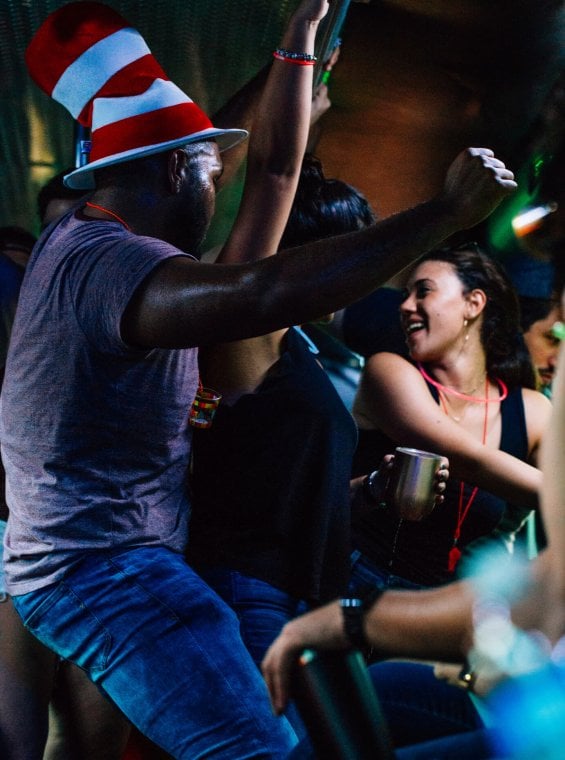
A night of dancing to Reggaetón.
Reggaetón
One of the Island’s most iconic and recent musical phenomena to come from the Island, reggaetón, can be heard everywhere on the Island, day or night. It’s easy to learn—just loosen your hips and let the beat guide your moves! Since this genre can be heard in most clubs, plazas, and anywhere where there are speakers, there’s no shortage of places where you can dance. Some places to experience reggaetón around the Island include:
- El Batey
- La Cubanita
- El Hangar
- Fifty Eight
- 7eight7
- Club Brava
- La Placita de Santurce
- Toxic
- Industry Club/Bar
Discover Puerto Rico’s nightlife scene
Where to Learn Reggaeton in Puerto Rico
Places like G.O.P. Dance Academy in Guaynabo and the touring company Viajando y Bailando offer classes for various levels, so everyone can join in on the fun!
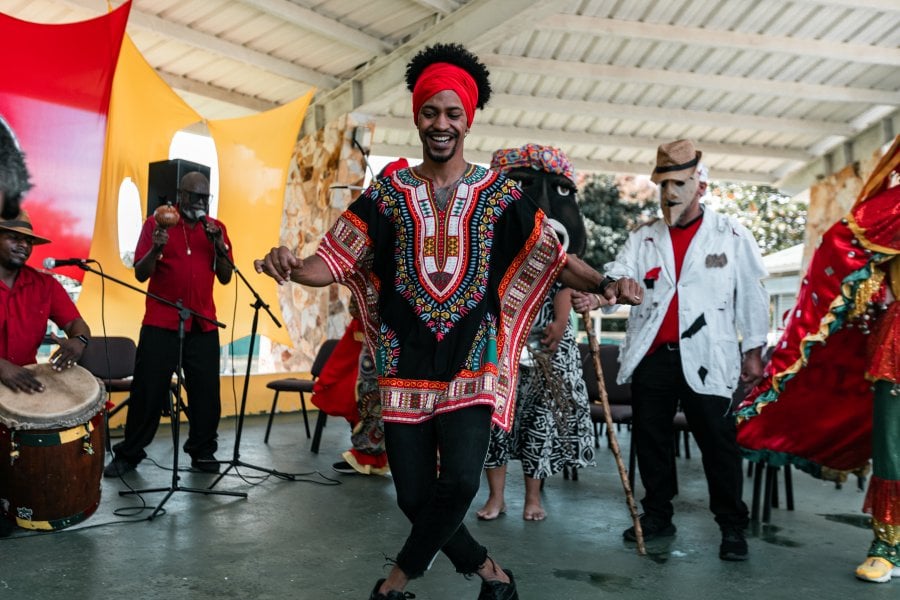
When it comes to bomba music and dancing, no one does it like the town of Loíza.
Bomba y Plena
Bomba is an Afro-Puerto Rican style of traditional music and dance that's had a resurgence over the past few years.
Places to Dance Bomba y Plena in Puerto Rico
Several schools teach bomba drumming and dancing to new generations, while venues like La Terraza de Bonanza in Santurce and La Vergüenza in Old San Juan offer weekly bomba nights with live percussion, singing, and dancing for all to experience. This style of dance is interactive, with the musicians taking cues from the dancers rather than the other way around.
Plena, on the other hand, is folk music with both Spanish and African roots and some influence from Bomba. The music is played on hand drums of different sizes, called panderetas; güiros, which is a gourd with indentations that are scraped rhythmically (somehow it works); and often other instruments like maracas, guitar, cuatro (a small Puerto Rican guitar), congas, trumpet, and accordion.
Where to Learn Bomba y Plena in Puerto Rico
To learn either or both styles of dance, you can take lessons at Escuela de Bomba y Plena Rafael Cepeda Atiles or at Escuela de Bomba y Plena Doña Caridad Brenes de Cepeda. Along with formal classes, both schools offer monthly events that include performances by the students and offer the public an opportunity to learn about the cultural significance of these dance and music styles.
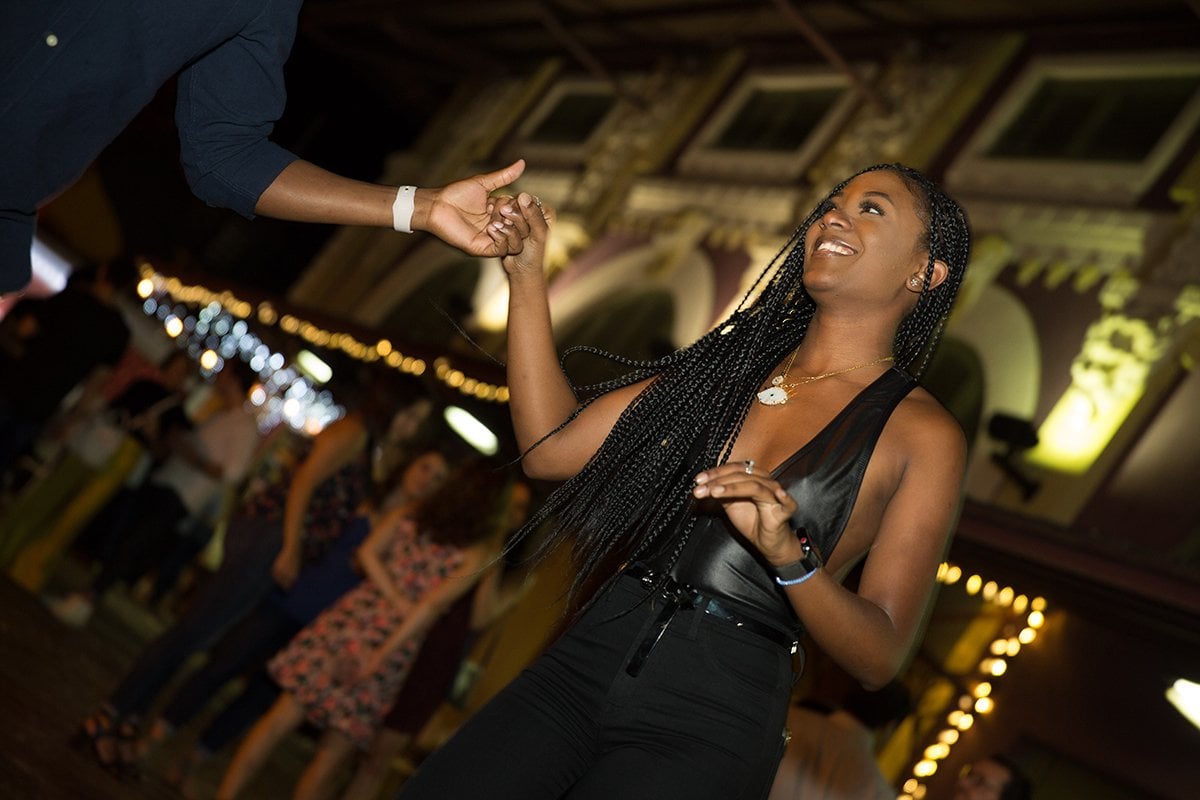
The nightlife in Puerto Rico is booming with places to go dancing.
Other Styles of Dance to Experience in Puerto Rico
While you're out, you'll probably hear other styles of Latin music, like merengue and bachata, which are also highly danceable and loved on the Island.
Merengue is a style of dance that originated in the Dominican Republic and consists of a basic two-step performed in a waltz position. In Puerto Rico, it's typical to sidestep and incorporate elaborate twists and turns to make it more fun.
Bachata is another style of Dominican music and dance. Here, the steps are short, with two side steps followed by tapping your toes to the back, then two side steps to the other side, and a tap step. Salsa Tours PR offers classes for merengue and bachata, as well as salsa and bomba. You can dance bachata and merengue in most places on the Island, like El Boricua, La Placita de Santurce, and many more!
Comment Guidelines
We value your thoughts and want to foster a respectful and engaged community. As such, we ask that you adhere to the following guidelines when posting comments
- Please ensure your opinions are expressed respectfully.
- We won’t remove comments that engage in courteous debate but hate speech or any form of profanity will not be tolerated. This also applies to the inappropriate use of emojis or hashtags.
- Do not downvote or dislike a comment simply because you disagree with another person’s views.
- Self-promotion and external links are not allowed and will be removed.
- Avoid sharing private information about yourself or others. Doxing (the act of leaking personal information with harmful intent) is strictly prohibited and will result in a ban.
- Comments that are off-topic will be deleted.


